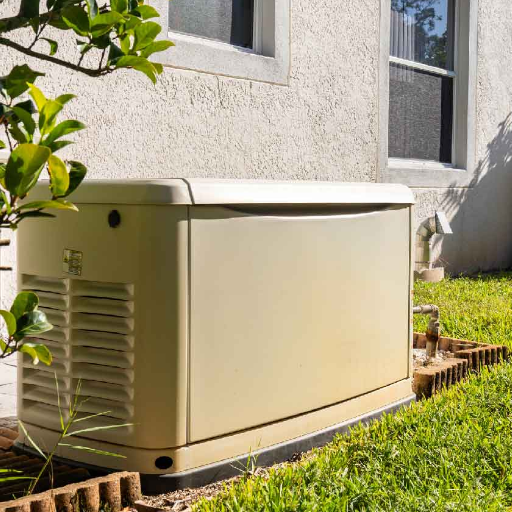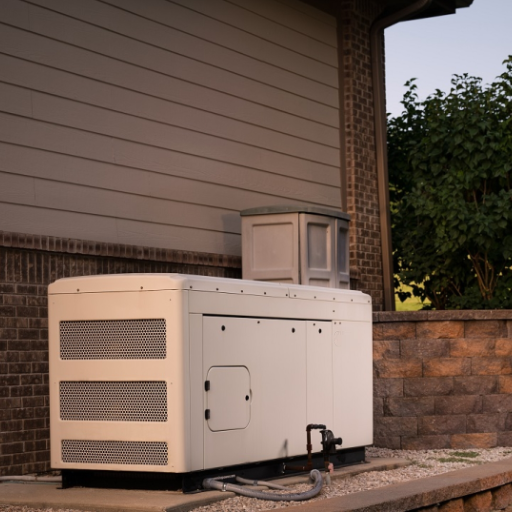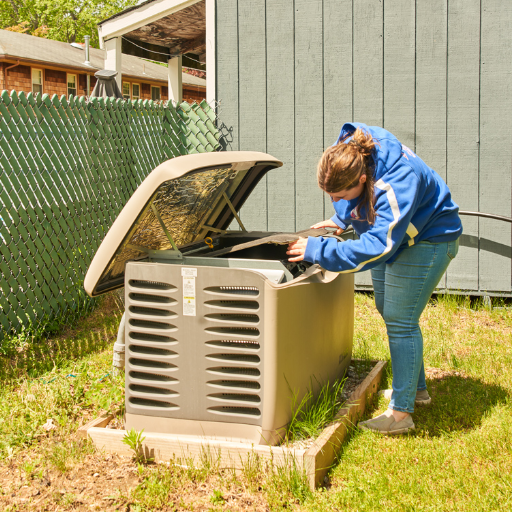With power outages affecting daily life severely, San Luis Obispo County residents are increasingly confronted with this matter. From affecting crucial services to making everyday life a little harder, the consequences do affect households, businesses, and community infrastructure. This blog will take you through the causes and effects of power outages in the area while bringing into focus how the community is adapting and responding to these challenges. The growing importance this issue holds in San Luis Obispo County should interest every distraught citizen or anyone considering bigger issues related to power disruptions. Follow up as we unfold the saga behind the outages and how they have weighed so heavily on the lives of so many.
What Causes Power Outages in San Luis Obispo County?
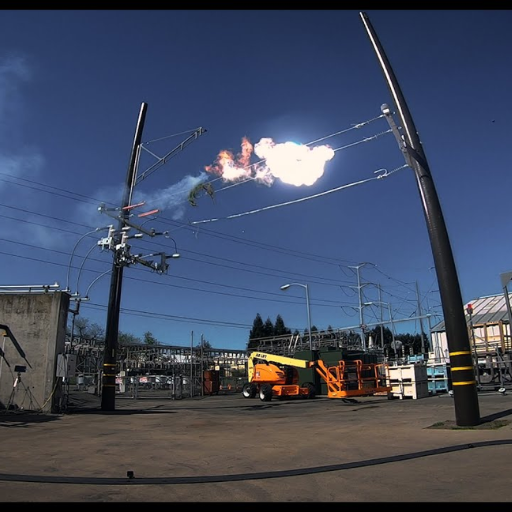
Power disruptions in San Luis Obispo County are generally due to a combination of natural disasters and infrastructure-related issues. Strong winds, heavy rains, and wildfires might damage the power lines during severe weather conditions, causing a loss of electricity. Then, high temperatures stress the power grid so that it can fail under heavy usage. Older equipment also contributes to the failures; such systems become prone to breakdowns with time. Planned outages do happen too, mainly due to maintenance purposes or to lessen wildfire risk during critical weather conditions. Together, these factors contribute to the regularity of power disruptions in the region.
How Does Severe Weather Affect Power?
Instigated by severe weather, outages disrupt large-scale electric power worldwide. High winds and storms may conspire to knock down power lines, uproot trees, and disable substations. According to the U.S. Energy Information Administration (EIA) report, weather accounted for about 58% of the reported major outages in the years 2016 through 2023; weather events include hurricanes, ice storms, and strong winds. And, lightning strikes during thunderstorms can damage important electrical infrastructure or overload systems.
Extreme heatwave conditions stress the power grid further. Heat increases electricity demand due to higher reliance on air conditioning. They also degrade transformers’ capabilities and those of other equipment! The summer heatwave in Texas in 2022 caused record electricity demand, and grid operators issued conservation alerts to prevent widespread blackouts. On the contrary, severe cold events, like the 2021 Texas Winter storm, froze supplies of natural gas and shut down power plants, subsequently leading to prolonged outages affecting millions of people.
Since climate change has hastened the occurrence of such extreme weather conditions, the risk to power infrastructure has increased. Utilities are thus investing heavily in grid modernization and climate-resilient infrastructure to address such risks while also combating the ever-growing challenge of severe weather.
Are Wildfire Risks a Major Cause?
Incineration is a really important topic for power infrastructure, especially for regions that go through dry and hot weather. Accordingly, over 68,000 wildfires scorched around 7.6 million acres in the United States in 2022 alone, as reported by the National Interagency Fire Center (NIFC). Hence, these fires pose an immediate threat to transmission lines and their grids, thus causing mass outages. In California, especially in more severe cases occasioned by extended droughts and rising global temperatures, utility companies have been under enormous pressure to make adaptations.
The origin of fires due to electrical equipment is a major one, such as the 2018 Camp Fire that burned down the town of Paradise, California, and cost $16.5 billion in damages. PG&E was held liable because a poorly maintained infrastructure caused the fire. Such incidents give utilities impetus to conduct preemptive power shutdowns affecting millions of customers during periods of highest wildfire risk.
Grid operators and utilities are therefore insulating power lines, setting up state-of-the-art weather monitoring systems, and replacing conventional infrastructure with fire-resistant materials to mitigate wildfire risks. Even though this effort is in place, research is continually showing how wildfire seasons are becoming progressively longer and more damaging, requiring increased funding and innovation levels to adequately safeguard energy networks and reduce subsequent interruptions caused by this rapidly increasing threat.
What Role Do Utility Companies Play?
The utility companies lie at the forefront in everything that entails the prevention of wildfire risk and energy infrastructure for long-term appreciation, including so much more. Various advanced methods are being applied; for example, weather monitoring systems have been set up to track, in real time, wind speed, humidity levels, and fire risk indices. PG&E, for example, installed over 1,500 weather stations along with 500 HD cameras over high-risk zones under its wildfire safety program. Also, satellite imagery and predictive analytics are used to spot vulnerable infrastructure and assess fire-related threats proactively.
Grid hardening, therefore, constitutes an equally important investment. Such efforts have led Southern California Edison to replace traditional power lines with covered conductors along over 1,700 miles of distribution circuits to reduce vegetation-related ignitions. Another interesting method involves the deployment of advanced technologies like fault detection systems, which can pinpoint a fault or its source, thus isolating it instantly to avoid sparking. According to a report from the Edison Electric Institute, utility companies across the U.S. spent over $5 billion on wildfire mitigation measures in 2022.
Moreover, public safety power shutoffs (PSPS) have become a contentious but necessary option. Utilities intend to prevent fires by means of de-energizing power lines amid extreme weather conditions, albeit at a price of forcing service interruption. While these measures have contributed to curtailing wildfire incidences associated with utility infrastructure, they emphasize the continued search for improvements with the community to balance safety and reliability against mounting wildfire threats.
How to Get Updates on Power Outages in San Luis Obispo
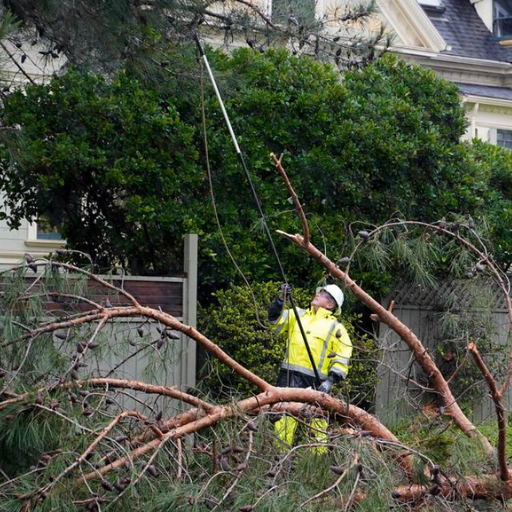
For updates on power outages in San Luis Obispo, please do the following:
Visit the Utility Provider’s Website – Check the official website of your utility provider for a live outage map and updates. For example, Pacific Gas and Electric (PG&E) has detailed information on outages, including which areas are affected and how long restorations are estimated to take.
Sign Up for Alerts – Opt into deliveries of text or email notifications from your utility company to receive real-time updates about outages.
Use Mobile Apps – Download the app of your utility provider, if there is one, so you can get easy access to information on outages via your phone.
Call the Customer Support Line – Give a call to the number for customer service of your utility company so that you know the latest about an outage in your location.
Follow Local Sources – Stay with local news channels, radio, or social media for emergency announcements and updates.
You’ll stay on top of things so that you can concentrate on preparing and coping with the outage by following the aforementioned steps.
Where to Find the Latest Outage Information?
To keep yourself abreast of power outages and related information, one should combine two or more reliable sources for a comprehensive understanding. Here are a few key methods potential outage details can be found:
Utility Company Websites and Apps
Our watts can be consumed from real-time outage maps and updates on utility companies’ websites. Many utilities also have mobile applications with push notifications to notify you about outages in your region.
Google Search
Google quickly provides you with accurate and timely information if you type in phrases like “power outage near me” or “current outages in [your area]”. Google directly integrates outage data from major providers and displays key information prominently on search results–such as the number of people affected and the estimated restoration times.
Social Media Sites
Check on your utility provider’s social media channels for updates. Twitter, in particular, is often relied on by utility firms to announce urgent outbreak information. On the other hand, searching hashtags relevant to the community or regional groups can help yield local perspectives as well.
Third-Party Outage Trackers
There are websites such as PowerOutage.us that collect outage data from electricity providers all over nationwide, supplying an in-depth account of outages through the country. These tools come in handy during extreme weather-making events.
With a combination of these resources, you have to stay on top of things and become proactive through power outages, thereby limiting disruptions to your planned routines. Always use answers from your utility provider when verification is required to be accurate and reliable.
How Often is the Outage Map Updated?
Update frequency for outage maps varies with a service provider and platform. In the case of very large utility companies, their outage maps are almost in real-time, updating every 5 to 15 minutes after any change in outage status. Data gets aggregated by providers on websites like PowerOutage.us, and maps there would usually update every 10 to 30 minutes. It is worth mentioning that, in times of severe weather or large-scale outages, a delay in data compilation could cause some variations in the update frequency.
Hence, for the best and most accurate information, one should always check with their utility provider’s official website or customer service. They almost always provide accurate restoration times, along with updates that might not necessarily have been put up yet by the third-party er/aggregate platforms. In so doing, these platforms will definitely keep you informed and ready to go with evolving situations.
Which Sources Provide Reliable Updates?
When in need of dependable updates during outages or emergencies, it is necessary to consult sources that are trustworthy and legitimate. Below are some dependable options available to you:
Utility Providers’ Official Websites and Mobile Apps
Utility companies typically provide information that is most accurate and current about an outage, the restoration efforts underway, and the estimated time of recovery. These platforms could also provide interactive outage maps and real-time updates relative to your actual location.
Government and Local Authorities
Emergency management organizations and local governments release critical updates over their official websites and on social media platforms. Websites such as FEMA (Federal Emergency Management Agency) or the emergency services webpage of your city can prove very useful in times of need.
National Weather Service and Meteorological Agencies
Agencies such as NWS or the national meteorological bodies thereof tend to provide very accurate updates on severe weather conditions and warnings that may result in outages.
Google Search and SOS Alerts
During a crisis, Google collates real-time information from trusted sources. Entering phrases such as “power outage near me” or “emergency alerts” into Google will give you authoritative information on the outage, the Google SOS Alerts map, safety tips, and situational updates when the SOS Alerts feature is activated.
Social Media Accounts of Authorities
Within the realm of verified social media accounts that cover emergency response organizations and utilities, one can expect to find authoritative live updates. Search via verified, authenticated accounts for only credible sources.
News Outlets
The reputable local and national news media provide background, interviews with officials, and expert analysis. Combine their reports with official sources for a better understanding.
While you might end up with conflicting statements given by different outlets, it will help you maintain a well-rounded view of the actual happening and keep updated with the latest news as circumstances change.
What to Do During a Power Outage in SLO County?
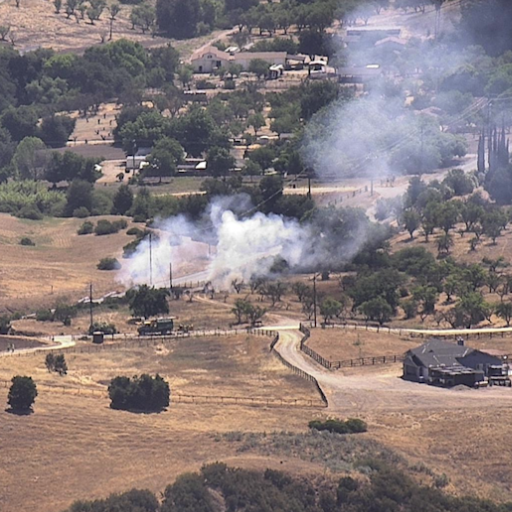
Stay Informed
Use a battery-powered radio or your mobile device to follow updates provided by local news outlets or official government sites.
Save Power
Conserve electricity by turning off and unplugging devices that are not necessary. This helps protect them in case of power surges when power is eventually restored.
Lighting
Resort to flashlights or battery-operated lanterns, steering clear of candles for fire safety reasons.
Preserve Food Safety
Don’t open refrigerators and freezers as much as possible to keep food cold the longest. Less than acceptable food might start spoiling four hours into a power outage.
Keep Warm or Cool
Layer up to stay warm during cold weather. For hot weather, drink plenty of water, find some shade, and fire up your battery-operated fan.
Check on Neighbors
Help an elderly or vulnerable neighbor who may require assistance during the outage.
All of these may help keep you safe and prepared until the power’s back on.
How to Prepare for an Unplanned Power Outage?
Having plans in place for an unexpected outage could take much of the stress away and make what is hopefully a rare event much more bearable. Here are detailed steps in preparation for a spontaneous power outage:
Assemble Emergency Kits
Drop in your kit, supplies deemed essential to support life for at least seventy-two hours. Such items include flashlights, spare batteries, non-perishable food, bottled water (at least one gallon per person, per day), a manual can opener, a first aid kit, and medication if applicable. The CDC also considers a backup phone charger or a power bank immensely important for staying connected during an emergency.
Prepare Your Home
Invest in surge protectors to protect your appliances and devices from sudden surges in electricity. If possible, install a backup generator, luckily, or if not, learn how to safely operate a generator. During outages, keep freezer and refrigerator doors closed. According to the USDA, when unopened, food in a fully stocked freezer will stay cold for about 48 hours, while a refrigerator will keep food cool for only about four hours.
Updates
Put in an offering of a battery-powered or hand-crank radio to catch emergency alerts and updates. Weather conditions triggering power outages are well worth being kept well-informed about through NOAA Weather Radio.
Plan for Medical Needs
In the event someone in your household is dependent on medical equipment that requires electricity, make sure you have backup power options available, such as portable battery packs. You should contact your utility provider and ask to be put on a priority list, if applicable.
Plan for Pets
Include extra food, water, and any medications your pet needs in your emergency supply kit. You may also want to prepare a plan to keep them comfortable and safe during an extended outage.
Money Matters
Power outages can render ATM and card payment systems inoperative. Carry some cash in small bills for day-to-day transactions.
Emergency Contacts and Plans
Develop a list of local emergency contacts, including family, utility providers, and community services. Develop a plan with your family so everyone knows what to do in the event of a blackout.
By taking such measures in advance, you would considerably decrease the difficulties that power outages pose to living and working together as a family. Remember that becoming well-prepared for an unforeseen event gives you the confidence to face whatever is thrown your way.
What Emergency Measures Should Residents Take?
An element of preparedness includes doing things beforehand and in response to an emergency to ensure individual and household safety. Here are some important steps and guidelines according to the present guides:
Stock Up on Emergency Supplies
Some essentials to include in an emergency kit might be non-perishable food, bottled water (one gallon per person per day for three days minimum), flashlights, spare batteries, a first-aid kit, a manual can opener, and a battery-powered or hand-crank radio. According to FEMA, almost 48 percent of Americans do not have any emergency supplies in their homes, which points toward the need for preparedness.
Develop an Emergency Communication Plan
All family members must be aware of how to communicate during an emergency. Take advantage of emergency alerting systems such as Wireless Emergency Alerts (WEA), and also buy power banks to charge mobile devices. Include in your list the phone numbers of local emergency services and utility companies (e.g., electricity or water companies).
Secure and Maintain Your Home
A thorough check should be made to confirm that the windows, doors, and roofs of a house are strong enough in case of a natural disaster. A homeowner in a storm area should look into the installation of storm shutters. According to the National Weather Service, securing outdoor furniture and loose objects can do much to prevent injuries or damage during severe weather.
Backup Power Solutions
Providing backup electricity to essential appliances with an alternative power source like a generator or UPS, is very necessary. In 2021, power customers in the United States experienced an average power interruption of eight hours, emphasizing the need for alternative power sources, according to data from the U.S. Energy Information Administration.
Stay Updated on Local Alerts
Track emergencies in real-time through weather apps, legitimate government websites, and local news broadcasts; registering for your local alert program also ensures you will receive this information as fast as possible.
Know Your Evacuation Routes
In cases of heavy flooding, wildfires, or hurricanes, know the evacuation routes for your community and neighborhood in particular. Keep hard-copy maps to be used should the digital ones become unavailable.
Such emergency plans can go a long way in making a household stronger through unforeseen scenarios and lessen the brunt of crises. Preparing ahead makes households even safer and helps instill in them the confidence needed for effectively addressing present challenges upon impact.
How to Report an Outage Effectively?
Efficient outage-reporting procedures ensure a much faster response from utility carriers and thereby a swift restoration of services. Follow these steps for quicker outage reporting:
First, Check for Local Outages
Check if the outage is widespread or limited to your location before reporting it. Go to the provider’s website or check their social media pages for any known outages. Provider companies like PG&E or Duke Energy typically operate outage maps showing affected areas in real time.
Use Official Channels
Usually, utility companies give you all sorts of means to file an outage report: hotlines, mobile apps, or an online outage form. For instance, you can report an outage on Con Edison’s website or simply text “OUT” to their designated number. Stay with these official channels to avoid unnecessary delays.
Be Specific
When reporting, provide your address, the type of outage, and details about the issue, such as flickering lights, total loss of power, or downed lines. For example, saying, “power lines are down on Maple Street” assists them in troubleshooting and prioritizing more critical repairs.
Stay Updated and Follow Up if Needed
After reporting, keep track of updates from the utility providers. Most provide an estimated time for restoration. Should your outage persist beyond that time frame, follow up and provide the reference number given to you.
Prompt Others to Report
More reports coming from the same vicinity imply a faster resolution of the outage. Get your neighbors to also report it, as this will further help the utility crews to locate and give priority to that area.
According to the 2023 report from the U.S. Energy Information Administration (EIA), the United States averaged outages of eight hours per customer per year, which goes to demonstrate the importance of outage-reporting systems. By obeying these steps, you speed up the resolution and thereby help utility providers deploy resources much more efficiently.
How Do Public Safety Power Shutoffs (PSPS) Work?

Power shutoffs for public safety (PSPS) are preventive steps taken by utility companies to minimize the possibility of wildfires during adverse weather conditions. During high winds, low humidity, and dry vegetation conditions when a fire danger is greatest, the utilities may shut down power for certain areas to prevent sparking by electrical equipment. When possible, customers will be notified ahead of time, and power will remain off until the danger promptly passes and the equipment has undergone inspection to ensure that it is safe. In essence, these shutoffs place the highest priority on the lives and property of people, even though there may be some temporary inconveniences that arise because of it.
What is the Purpose of PSPS in San Luis Obispo?
Public Safety Power Shutoffs in San Luis Obispo try to chop down the wildfire threats during extreme weather. When some factors come into play, such as windsome high, high temperatures, and dry vegetation, there is a much higher chance of ignition of a fire. PSPS events are there to protect the community by de-energizing the power lines in areas where wildfires are most likely to occur.
Data supports the assertion that, during specific weather conditions, utilities in the region, such as PG&E, monitor weather and carry out risk assessments to decide if a PSPS event is apt to occur. Otherwise, San Luis Obispo faces a high risk of fire during the dry season, especially in areas regarded as rural with high vegetation, thus greatly necessitating these shutoffs. For example, in 2023 alone, PG&E reported that they shut off the power to tens of thousands of customers across California under conditions of heightened risk, with San Luis Obispo being one of the affected places.
Being an intervention, PSPS are destabilizing, surely, but they are a matter of life and death safety. According to Cal Fire, around 85% of wildfires that occur in California are caused due to human activity, with electrical equipment being one of the sources. So, energy companies implement PSPS to reduce such risk and to save lives, limbs, and natural resources from devastating wildfires. Community members should thus prepare for PSPS events with emergency kits, utility alerts, and contingency plans that will make the power outage less irritating.
How is the Decision to Cut Power Made?
The decision to shut off power for Public Safety (PSPS) is not taken lightly, involving multiple other factors in the calculation of utility companies. Power agencies observe real-time weather conditions and rely on information from weather stations and fire agencies to determine wildfire risk. Key considerations are Red Flag Warnings issued by the National Weather Service; a very dry atmosphere, humidity below 20%; wind speeds maintained at above 25 mph, or wind gusts exceeding 45-50 mph. These conditions create a high chance for electrical infrastructure to ignite wildfires.
Besides weather considerations, utilities would check moisture levels on vegetation, i.e., “Dead Fuel Moisture” data, to assess if grasses, shrubs, and trees are prone to burning. The longer an area has had drought and high temperatures, the more its vegetation is reasonably ready to catch fire with a spark or two. They also inspect their infrastructure, looking for areas that may be highly susceptible to equipment failure due to strong winds.
Therefore, these utilities coordinate their decisions with their state and local fire agencies. For example, PG&E’s PSPS program has the benefit of a network of nearly 1,300 weather stations and 65 high-definition cameras keeping a sharp eye on high-risk areas for precise fire condition prediction. The final decisions are made based on predictive models that combine historical data, satellite imagery, and local field observations.
While a power shutoff can be very inconvenient, it is a necessary safety measure to prevent a catastrophic wildfire. Being transparent during the early stages of decision-making has led to the improvement of community notifications, generally issued about 24-48 hours before a PSPS event, so that residents and businesses can prepare.
What Areas Are Most Affected by PSPS?
Regions struck by Public Safety Power Shutoff (PSPS) events are those with a confluence of high wildfire risk and dry, windy weather conditions. Such an area is usually found in California foothills, mountainous terrain, and some rural communities where the electrical infrastructure is more susceptible.
Counties that are most frequently affected include Sonoma, Napa, Butte, and San Diego due to a history of wildfires and high winds. Northern California areas tend to experience more PSPS events because of their thick vegetation and proximity to prime fire zones. According to recent reports, utilities like Pacific Gas and Electric have employed advanced fire risk models to pinpoint high-risk areas, identifying Shasta County, the Sierra Nevada foothills, and parts of the Central Valley as areas particularly prone to PSPS events.
From California Public Utilities Commission data, it is evident that in the past few years, shutoffs have been affecting on the order of millions of residents annually, with some rural districts experiencing longer-term outages. Urban areas, on the contrary, are less frequently targeted as the modernized electrical equipment and underground infrastructure greatly reduce fire risk. Still, densely populated regions bordering wildfire-prone zones, as in parts of Los Angeles County, are also subject to PSPS when the conditions call for extreme caution.
The emerging data argue that with the ongoing investments in grid hardening, like weather-resistant wires and better vegetation management, the area-scale of affected sites during future PSPS events may, in turn, gradually decrease. These developments are crucial when it comes to balancing the utmost safety objectives against minimizing disruptions from power shutoffs.
What Are the Steps for Power Restoration?
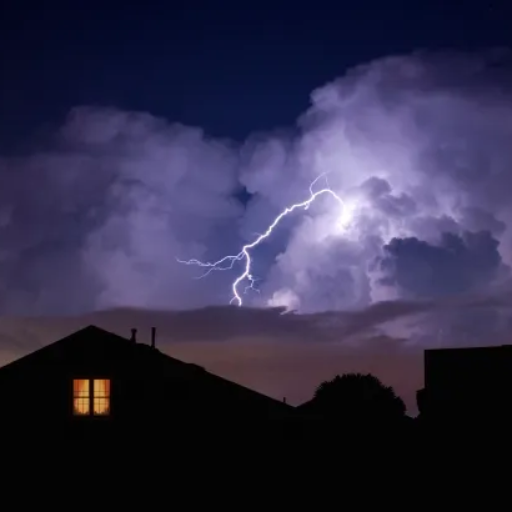
Damage Assessment: Utility crews, first of all, inspect the affected areas for any damage to power lines, poles, and other infrastructure components.
Prioritizing Repairs: Repairs get prioritized based on the critical infrastructure and areas that also pose safety concerns (such as downed power lines).
Restoration of Essential Services: Power is restored to hospitals, emergency services, and critical facilities before working on other customers.
Repair and Testing: The crews repair the infrastructure and then test the system to determine if it is functioning correctly and safely.
Restoration of Power: Power is restored in stages to homes and businesses after all repair and testing are complete to guarantee stability on the grid.
Ongoing Monitoring: After restoration, the system is monitored to preclude any further issues and maintain reliable service.
These steps guarantee that the power restoration is performed safely and efficiently so as to lessen the chances of an additional outage.
How is Power Restoration Managed?
Power restoration is a well-coordinated activity, involving clear procedures, technology, and trained manpower. Utility companies depend on a blend of modern infrastructure, data analysis, and manual inspections to restore power. Some important points to note are:
Smart Grid Technology: Modern power grids are equipped with sensors and automatic systems that can detect outages virtually instantaneously and sometimes isolate the exact spot at which the problem has occurred. According to the U.S. Department of Energy, the smart grid has the potential to diminish outage duration by 40% by expediting repair activities. Critical Services Prioritized: The restoration starts with hospitals, emergency services, and water treatment plants to avert situations from actually causing harm to life, or unsafe situations in which the needy fight for bare necessities for public health.
Weather Challenges and Preemptive: Utilities often use predictive analytics to pre-stage repair crews and equipment in high-risk areas owing to weather-related power outage events such as hurricanes or wildfires. For example, the Electric Power Research Institute elucidates how much predictive deployment can diminish restoration time after natural disasters.
Communication Systems: Many companies invested in sturdy communication platforms that keep customers apprised of each restoration time estimate. Apps or websites that raise the restoration process from start to finish with real-time updates function as transparency tools to empower customer expectations.
Workforce Coordination: Utility workers tend to be the ones who receive calls at any hour of the day or night; in major outages cases, assistance is requested from neighboring states or regions via mutual aid agreements that animate thousands of crews when local resources are stretched beyond their limits by a major disaster such as Hurricane Ian in 2022.
Continuous Grid Modernization: Investments in underground lines, renewable energy integration, and energy-storage systems work to lessen the chance of an outage over time. The Edison Electric Institute reports that U.S. utilities invested more than $145 billion in 2022 to improve grid reliability and resilience.
With technology, planning, and resource allocation in place, restoration remains as speedy as possible to avoid inconveniences and protect the public.
What is the Estimated Time for Restoration?
Depending on the severity and scale of the outage and the particular incidents of the outage, the estimated time for power restoration could take any amount of time. Per any standard industry report, and according to the latest data obtained from authentic sites, typically smaller outages that include local equipment failure tend to be resolved within a few hours, from 2 to 6 hours. These can be reduced if utilities have the latest outage detection technology, such as an automated fault location system.
In the case of very large outages caused by major storms or natural disasters, there may be days or weeks required for restoration, depending on the extent of damage done to infrastructure like power lines and substations. For example, during Hurricane Ian in 2022, some utilities declared restoration times from 24 hours to areas that were less impacted to more than 14 days to those that were heavily devastated. Other factors included the availability of crews, weather conditions, and access to affected areas.
Utilities also maintain live outage maps along with estimated restoration time updates to let their customers know. Utility companies, like Duke Energy and Pacific Gas & Electric, integrate real-time outage data to provide carriers with an accurate outlook. Time, therefore, is getting shorter in many areas because of recent investments in grid resilience through underground infrastructure and renewable energy microgrids.
Affected customers are encouraged to seek the most accurate information by checking updates directly from their utility provider’s website or mobile app, as such sources can bring situational specifics tailored to an ongoing outage.
How Do Utility Companies Plan for Future Outages?
Utility companies prepare for future outages with a proactive and systematic approach that involves analytical data, emerging technologies, and infrastructure maintenance. One such principle is risk assessment based on historical data augmented with predictive modeling. Companies study outage patterns and prevailing weather trends to lock in on areas of vulnerability to prioritize investments for resilience.
To prevent the outages from occurring, technology is of paramount importance. The smart grid system was built with sensors and automatic controls to monitor energy networks in real-time, detecting faults and isolating them within a short period to safeguard against service disruptions. Other utility companies use artificial intelligence to foresee the subtle failures of equipment long before the actual failure occurs, triggering maintenance and outright replacement.
Climate challenges and hence some hardening activities for infrastructure. For instance, many utilities consider putting overhead power lines underground, especially in areas where extreme weather conditions exist. According to a report by the Edison Electric Institute, undergrounding power lines against storm-caused outages could be expensive.
Opening the list also entails diversifying the sources of energy through renewable energy, distributed energy resources (DERs), and storage systems. Microgrids powered by solar panels or wind turbines can continue servicing essential services when the main grid collapses. California utility companies, for example, are currently sponsoring Community Microgrid Enablement Programs to build resilience to wildfires and other climate risks.
Another important consideration for outage preparation is the cooperation between the public and private partners. A network of utility companies, agencies, and research institutions fuels innovation and maintains emergency response plans to coordinate effectively during disasters. Any preparation measures are constantly revised based on what has been learned from previous events.
The other factor in outage planning is investment in customer education and communication. Many utility companies provide their customers with information on how best to prepare for a power outage and safety tips related to instances of severe weather conditions. Innovations in mobile apps and text alert systems are also enhancing the timely dissemination of notifications during emergencies, fostering transparency and trust.
News updates and industry reports as primary sources seem to imply that utility companies worldwide are increasingly adopting these multi-pronged strategies to boost reliability, lessen disruptions, and get ahead of challenges facing the electricity sector.
Reference Sources
- Cuesta College – Power Outage Information
Guidelines and information on power outages are available to residents of San Luis Obispo County.
- California Polytechnic State University-PSPS Public Safety Power Shutoff
Details about power outages on campus that affected facilities and operations.
- University of California Agriculture and Natural Resources-Severe Winter Storms and Power Outages
Implications of power outages in San Luis Obispo and adjoining counties during severe weather events.
Frequently Asked Questions (FAQs)
Q: What is a public safety power shutoff in SLO County?
A: A public safety power shutoff in SLO County is a preventive measure used by utilities like PG&E to reduce the risk of wildfires during severe weather conditions. It involves temporarily turning off power in specific areas to ensure public safety.
Q: How can I check the current status of the power outage in SLO County?
A: You can check the current status of the power outage by visiting the PG&E outage center, which is updated every 15 minutes to provide the latest information for customers affected.
Q: Why might the power be shut off in northern San Luis Obispo County?
A: The power might be shut off in northern San Luis Obispo County as part of a public safety power shutoff to prevent wildfires in times of high fire risk, as determined by weather forecasts and guidance from fire agencies.
Q: How can I prepare for an outage if I live near Templeton?
A: To prepare for an outage near Templeton, ensure you have emergency supplies, a communication plan, and keep devices charged. Stay informed through the PG&E outage center and local news, such as the San Luis Obispo Tribune.
Q: What should I do if I am without power for an extended period?
A: If you are without power for an extended period, check the PG&E outage center for updates, use battery-powered or solar-powered lights, and avoid opening refrigerators to keep food cold. Consider staying with friends or family if conditions become unsafe.
Q: How does PG&E decide which areas are affected by an outage?
A: PG&E decides which areas are affected by an outage based on weather forecasts, vegetation conditions, and input from fire agencies. They aim to minimize the impact while prioritizing public safety.
Q: Are outages automatically restored once conditions improve?
A: Yes, outages are automatically restored once PG&E determines that conditions have improved and it is safe to re-energize the lines. The process involves inspecting the power lines to ensure safety.
Q: Where can I find updates on the PG&E outage affecting my community?
A: Updates on the PG&E outage affecting your community can be found on the PG&E outage center, which is updated regularly. Local news outlets like the San Luis Obispo Tribune also provide information on outages.
Q: How does California power management involve public safety power shutoffs?
A: California power management involves public safety power shutoffs as a critical tool to prevent wildfires during extreme weather conditions. This is a coordinated effort with utilities, local governments, and emergency services to ensure public safety.
Q: What are the indicators that a public safety power shutoff might occur?
A: Indicators for a potential public safety power shutoff include high winds, low humidity, dry vegetation, and warnings from weather services. Outages with red flag warnings are especially indicative of a higher likelihood of a shutoff.




